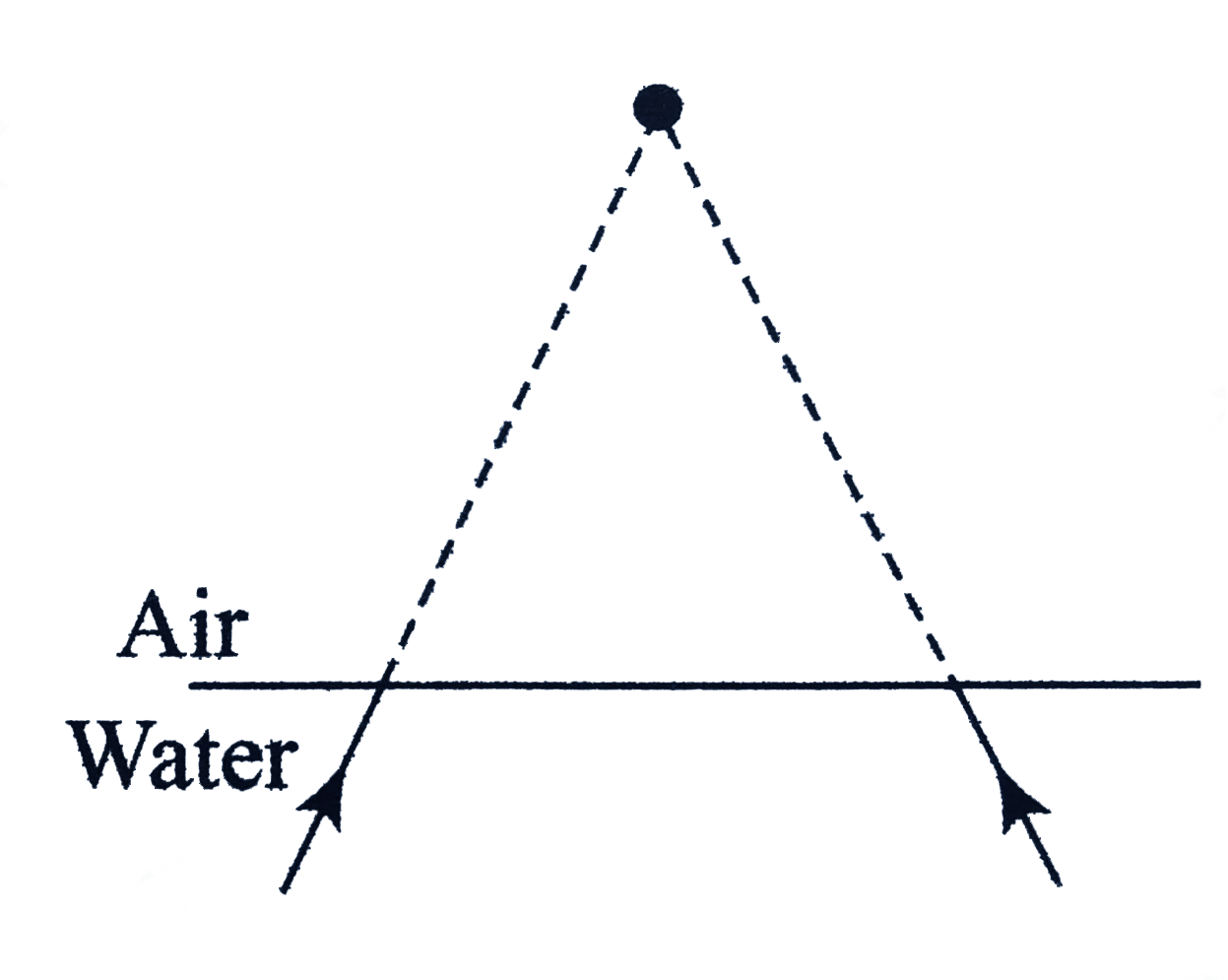A converging set of rays, travelling from water (with refractive index 4/3 to air) is incident on a plane interface, the rays would have converged to a point o, 40 cm above the interface. However, due to refraction the rays will bend. At what distance above the interface will the rays actually converge?

53.3 cm
25 cm
30 cm
10 cm
The correct Answer is:C
A ray of light travels from water across the interface through air and converges to form an image at I. Here, medium 1 is water and medium 2 is air.

d1=+40cm,μ1=43,μ2=1
As, μ2μ1=Real depth (d2)Apparent depth (d1)
So, μ1d1=μ2d2 or d2=μ2μ1d1, we get d2=+30 cm
Thus, the image is formed 30 cm above the interface.
Topper's Solved these Questions
Similar Questions
A converging set of ray, traveling from water to air, is incident on a plane interface. In the absence of the interface, the rays would have converged to a point O, 60 cm above the interface. However, dur to refraction the rays will bend. At what distance above the interface will the rays actually converge?

View SolutionA converging bundle of rays travel from water (refractive index 4/3 ) to glass (refractive index 1.5) through a convex interface of radius 16cm. In the absence of the interface, The rays would have converged to a point 32 cm from the pole of the interface. Where will the rays actually meet after refraction?
View Solution
Knowledge Check
Light ray is travelling from a medium of refractive index μ in to air. Angle of incidence at the interface is 53∘. Light ray is found to suffer total internal reflection. Select possible values of μ from the following :
A1.2B1.3C1.4D1.6A ray of light travelling inside a rectangular glass of block of refractive indx ×√2 is incident on the glass air surface at an angle of incidence of 45∘ . the refractive index of air is 1 . The ray will
Aemerge into air without any deviationBbe reflected back in to glassCbe absorbedDemerge in to air with an angle of refraction equal to 90∘A ray of light travelling inside a rectangular galss block of refractive index √2 is incident glass-air suface at an angle of incidence of 45∘. The refractive index of air is one. Under these conditions, the ray
Awill emerge into the air without any deviationBwill be reflected back into the glassCwill be absorbedDwill emerge into the air with an angle of refraction equal to 90∘
A light ray moving in medium-I (of refractive index n1) is incident on interface of two media and it is totally internally reflected at the interface. Now, refractive index n2 of medium-II is decreased, then

View SolutionA ray of light travelling inside a rectangular glass block of refractive index√2is incident on the glass-air surface at an angle of incidence of 45∘. The refractive index of air is one. Under these conditions the ray will
View SolutionIn the given figure rasy incident on an interface would converge 10cm below the interface if they continues to move in straight lines without bending. But due to refraction, the rays will bend and meet some where else. Find the distance of meeting point of refracted rasy below the interface, assuming the rays to be making small angles with the normal to the interface.

View SolutionA converging beam of light rays incident on a glasa-air interface as shown in figure. Find where these rays will meet after refraction.

View SolutionA ray of light travelling inside a rectangular glass block of refractive index √2 is incident on the glass–air surface at an angle of incidence of 45∘. The refractive index of air is 1. Under these conditions the ray
View Solution